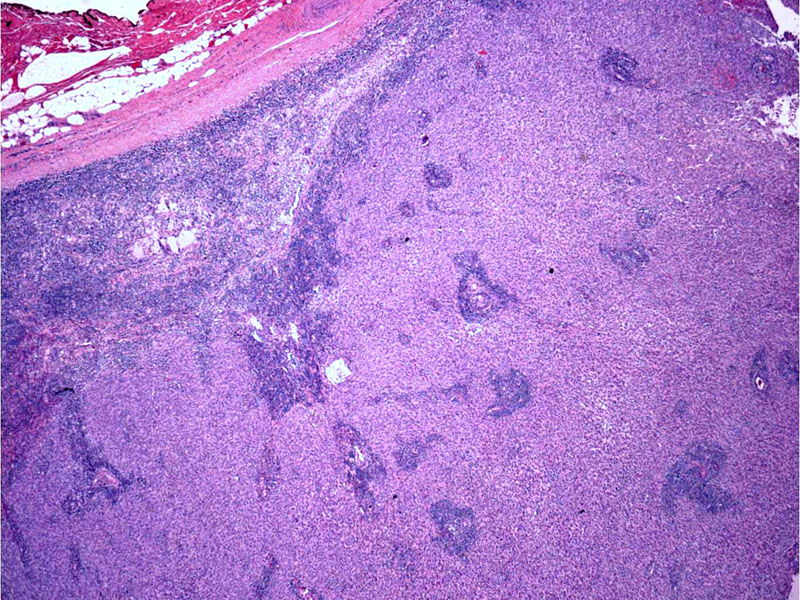System: Hematopathology: Lymph Nodes: Neoplastic: Follicular Dendritic Cell Sarcoma

System: Hematopathology: Lymph Nodes: Neoplastic: Follicular Dendritic Cell Sarcoma



well circ -- pushing border, i guess this is a node? Image
med- a slight storiform pattern can be discerned; note the sprinking of mature lymphocytes throughout the tumor, a helpful feature Image
tumor cells are spindly, ovoid here but can also be interlacing fascicles, whorled, diffuse , follicle-like, or trabecular; Usually more than one pattern can be found in a single tumor. Image
tumor cells have a moderate amount of eosinophilic cytoplasm and indistinct cell borders, yielding a syncytial appearance Image
i guess this is showing this area with multinuc and more cytoplasm -- cells can be more polygonal as here Image
perivasc lymphs; Nuclear atypia is usually mild, although more pleomorphic foci may also be found, particularly in recurrences; mitotic counts are variable among tumors Image
geographic tumor necrosis Image
differential diagnosis and corresponding immunopattern; EMA is positive in the majority of tumors as well, a helpful feature -- it can form a thick fluffy coating on the cell surface, apparently highlighting the complex cell processes of the individual tumor cells, or be predominantly cytoplasmic Image
and here is the strong CD21, a marker of follicular dendritic cells; tumors are cytokeratin negative Image
CD23 strong diffuse membranous staining; other cases may be more patchy than this Image
Clusterin Image
Spindle cells have interdigitating long slender processes running in parallel and joined by multiple well-developed desmosomes. Image
another EM showing desmosomes (i think); organelles are sparse Image
Probably don't need this since have the other chart Image
The tumor usually affects young adults, who present with lymph node enlargement. However, the frequency of extranodal occurrence is most likely underestimated because these rare tumors are easily diagnosed as some other neoplasm.
Predisposing factor: hyaline vascular Castleman's
The natural history can be quite variable and difficult to predict. Although cure can be achieved in some, others follow a highly aggressive clinical course.